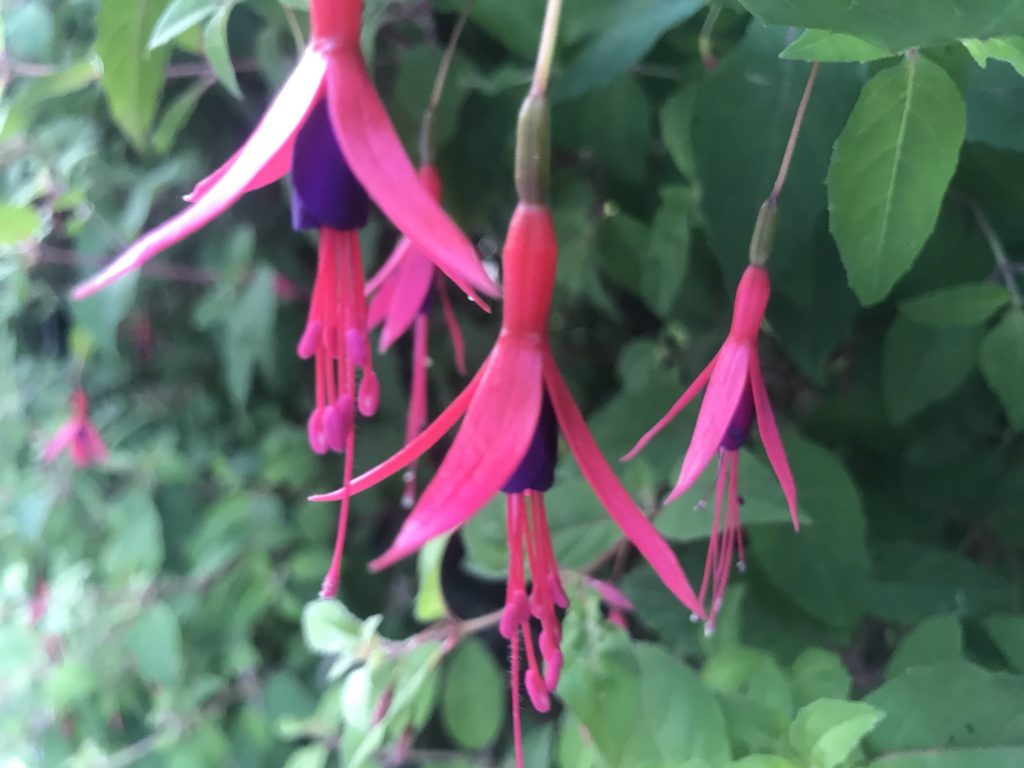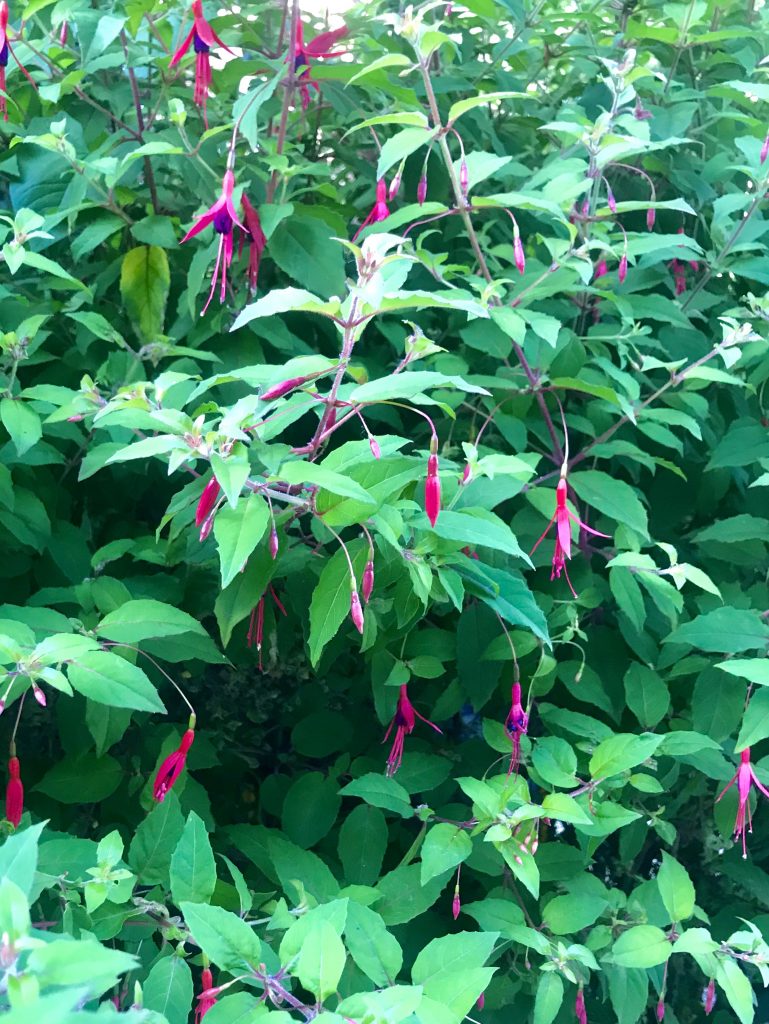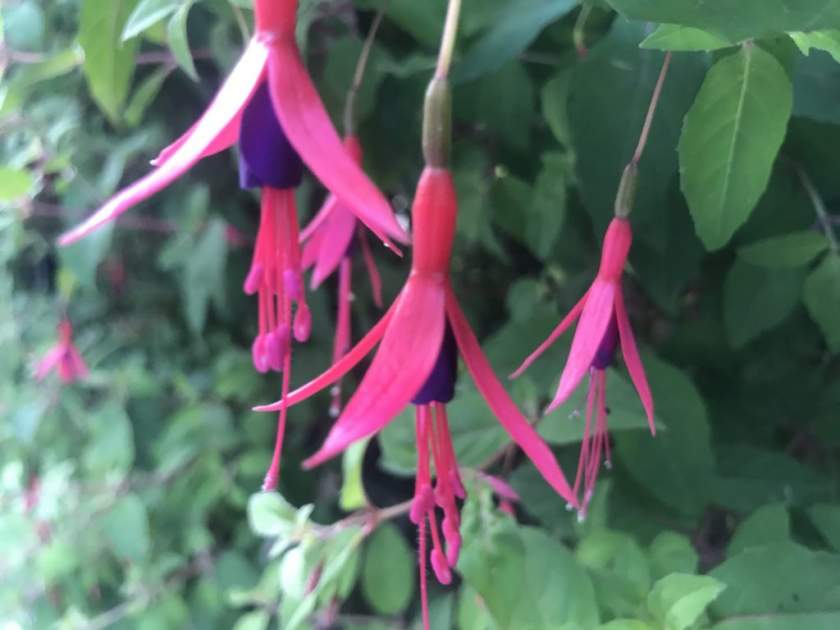Cultivating Fuchsia magellanica: A Guide to Growing Hardy Fuchsias
Fuchsias are well-known for their vibrant colors and diverse shapes, making them popular plants for pots, hanging baskets, and gardens. One notable species, Fuchsia magellanica, belongs to the Onagraceae family and is native to South America. This hardy bush features semi-evergreen foliage and can grow up to approximately 2 meters or 6 feet in height, making it ideal for hedges.
Flower shape: The flowers of Fuchsia magellanica are bell-shaped, characterized by a tubular structure with a flared opening. They typically measure 1-2 inches in diameter. The petals come in various shades, including pink, purple, and red. Notably, the sepals, which are the outer protective structures of the flower, are often longer than the petals, creating an elegant and distinct appearance.
Leaf shape: The leaves of Fuchsia magellanica are oval-shaped and range in size from 1 to 2 inches in length. They have a smooth surface and a dark green color, providing a rich backdrop for the vibrant flowers. The leaves are arranged in an opposite pattern along the stems, contributing to the overall aesthetic appeal of the plant.
The bell-shaped flowers and oval-shaped leaves of Fuchsia magellanica contribute to its visual appeal and make it a popular choice among gardeners seeking to enhance their outdoor spaces with its unique and charming features.
Habitat and Origin:
Fuchsia magellanica is native to South America, particularly the southern regions of Argentina and Chile. It thrives in diverse habitats, including forests, shrublands, and coastal areas. The plant has been widely cultivated and naturalized in various regions around the world due to its ornamental value.
Cultivation:
Sunlight: Provide Fuchsia magellanica with a location that receives full sun or partial shade. While it can tolerate some direct sunlight, partial shade helps protect the plant from intense heat and potential scorching.
Watering: Regular watering is essential to keep the soil moist for Fuchsia magellanica. Ensure the soil is well-drained to prevent waterlogging, which can be detrimental to the plant’s health.
Pruning: Prune Fuchsia magellanica in spring after the previous year’s flowering growth has finished. Cutting back the stems and leaving one or two buds intact stimulates new growth and enhances the plant’s overall appearance. This technique encourages more flowers to bloom in the upcoming season.
Soil: Plant Fuchsia magellanica in moist, well-drained soil that is rich in organic matter. Prepare the soil by incorporating compost or organic mulch into the planting area. This enhances moisture retention and provides essential nutrients for optimal growth.
The charming flowers of Fuchsia magellanica, with their pink outer petals and deep purple inner petals, create an eye-catching display. Not only do they captivate gardeners, but they also serve as a valuable food source for bees and other pollinating insects, contributing to a thriving garden ecosystem.
By providing suitable growing conditions and following these guidelines, you can successfully cultivate Fuchsia magellanica, enjoying its profusion of charming flowers and adding vibrancy to your garden space.

Propagating Fuchsia magellanica:
Hardwood and Semi-Hardwood Cuttings for Successful Propagation
Propagating Fuchsia magellanica can be accomplished through two main methods: hardwood cuttings and semi-hardwood cuttings.
Hardwood Cuttings:
During the dormant season, which is usually in late winter or early spring, take hardwood cuttings to propagate Fuchsia magellanica. Follow these steps:
- Select a healthy, mature stem from the parent plant.
- Using sharp, clean pruners, cut a section of the stem that is around 10-15 cm (4-6 inches) long. Ensure there are a few sets of leaves on the cutting.
- Remove the lower leaves from the cutting, leaving only a few sets of leaves at the top.
- Dip the bottom end of the cutting in a rooting hormone powder to promote root development (optional).
- Plant the cutting in a suitable propagation medium, such as a mix of perlite and peat moss or a well-draining potting mix.
- Place the container in a warm location with bright, indirect light.
- Keep the soil consistently moist but not waterlogged.
- After a few weeks, roots should start to develop. You can gently tug on the cutting to check for resistance, indicating root growth.
Semi-Hardwood Cuttings:
Semi-hardwood cuttings are taken when the stems of Fuchsia magellanica are partially matured. This method is typically done during the late spring or early summer. Follow these steps:
- Choose a healthy stem that is semi-matured, meaning it is not too soft or too woody.
- Using clean and sharp pruners, take a cutting that is approximately 10-15 cm (4-6 inches) long. Ensure there are a few sets of leaves on the cutting.
- Remove the lower leaves, leaving only a few sets of leaves at the top.
- If desired, you can apply rooting hormone powder to the bottom end of the cutting to aid in root development.
- Plant the cutting in a suitable propagation medium, such as a mix of perlite and peat moss or a well-draining potting mix.
- Place the container in a warm location with bright, indirect light.
- Maintain moist soil conditions, ensuring it doesn’t become waterlogged.
- After a few weeks, roots should begin to form, and the cutting will show signs of new growth.
The attractive flowers of Fuchsia magellanica not only captivate gardeners but also serve as a source of food for bees and other pollinating insects, making it a valuable addition to any garden ecosystem.

Also, you might enjoy reading about Fuchsia paniculata or Fuchsia triphylla ‘Thalia’.




